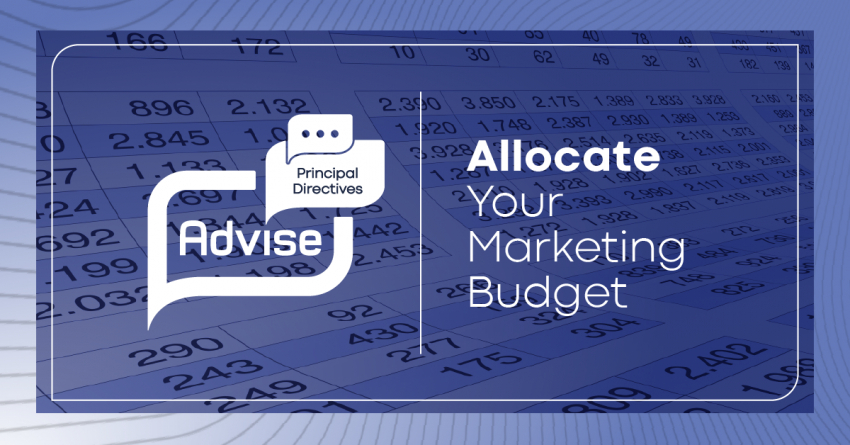For many firm leaders, budgeting is a challenge. You may think, “Isn’t it easier to just forget that step?” If you feel this way, you’re not alone. But the marketing budget is one of the most important aspects of your AEC marketing plan—it assists you in committing to your plan and making it actionable. The good news is, we’ve got some guidelines to follow to establish your firm’s budget. As a firm leader, think of these guidelines as you make your assignments, and complete your organizational goals.
1. Measurable Goals Checklist
Set your targeted time frame, percentages for personnel costs vs. expenses, and percentages for direct vs. indirect marketing. If your entire budget is a pie, these decisions are how you slice it.
We recommend using your firm’s fiscal year timeframe for both your plan and budget. Industry standard directs that two-thirds (70%–80%) of your marketing budget should be allocated to personnel costs, while the remainder (20%–30%) will be allocated to actual expenses.
The majority of your budget (45%–65%) should be allocated for direct marketing costs—face-to-face contact with your existing and potential clients. The remainder should be used for communications and support activities. These can include public relations, website, promotional materials, etc. Some flexibility can occur according to your target market sectors, but this is a good rule of thumb.
2. Determine a Method
How do you establish a starting point for your budget? There are three methods that are used most frequently. We suggest you evaluate their pros and cons to determine which might best fit your comfort level.
- Review: Established by reviewing the previous year’s costs for development of the upcoming year’s budget.
- Percentage: Allocates a set percentage of your firm’s total operating revenues to marketing. Typically, this ranges from 5%–15%.
- Objective-Based Budgeting: Assigns costs to each item in your marketing plan. This method allows you to base your budgeting on your firm’s business plan revenue goals and marketing plan implementation tasks. While more time-consuming than the other two methods, this is by far the most accurate and manageable budgeting methodology.
3. Standardize Categories
You’ve already determined your goal for distributing labor vs. expense categories. Now break those down further: Who, what, when, where and why? Developing standard categories can help you understand exactly what should be included in a budget and will help you establish a baseline and track trends over the years. The following categories are recognized as the most common within AEC firms.
- Labor: Most of your marketing costs will be related to personnel. There are guidelines for calculating available time for personnel, understanding billable vs. non-billable time, how to charge principals’ time, and an understanding of what labor costs look like for our industry. Check with professional organizations or a consultant to get specifics for your firm.
- Expenses: While categories can vary widely, the following are a good starting point.
- Travel/entertainment
- Supplies
- Software/equipment
- Printing/reproduction
- Photography
- Telecommunications
- Postage
- Subscriptions
- Dues
- Tradeshows/seminars
- Consultants (training, website, graphic design, etc.)
- Awards/exhibits
- Special events
- Contributions
- Other
- Travel/entertainment
Tips for Implementation and ROI
The most difficult part of having an established marketing plan is “proving” that your tasks provide a return on investment. A marketing budget is key to learning what is working and what isn’t.
Make sure you track your successes and failures within your planning process. You must be flexible to the continual ebb and flow of the marketing process. Some areas are easy to track and portray a clear win or loss. However, many marketing areas are more difficult to quantify, such as public relations, website, and social media.
Review your plan monthly at a minimum. This will give you a clear indication of whether you are staying on track and where you may need some adjustments. Don’t be afraid to discuss your budget with your marketing team.
As firm leader, holding your firm responsible for the tasks and objectives they set through actively and effectively monitoring the budget will help demonstrate the value of the firm’s activities and expenditures. Understanding how to budget and monitor marketing costs will help to drive your plan in the right direction, strengthening the overall firm and making your goals even more achievable.






